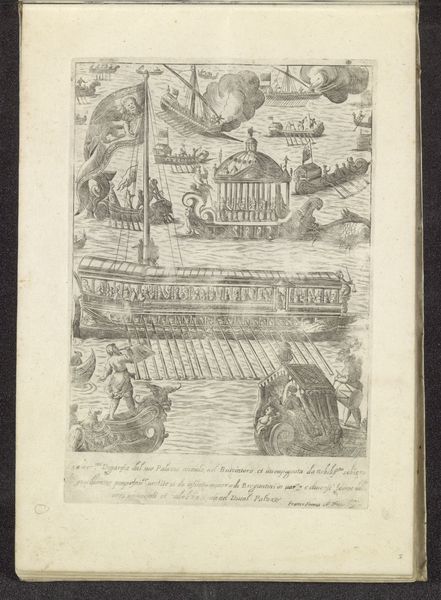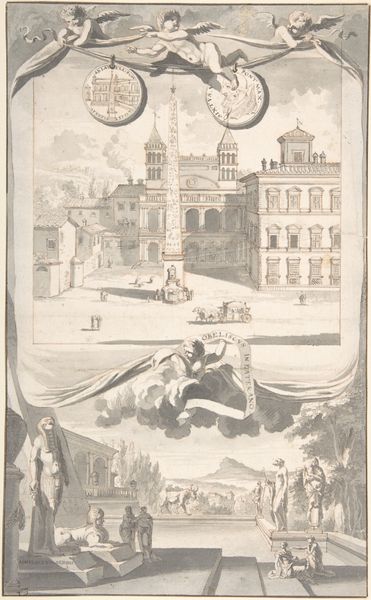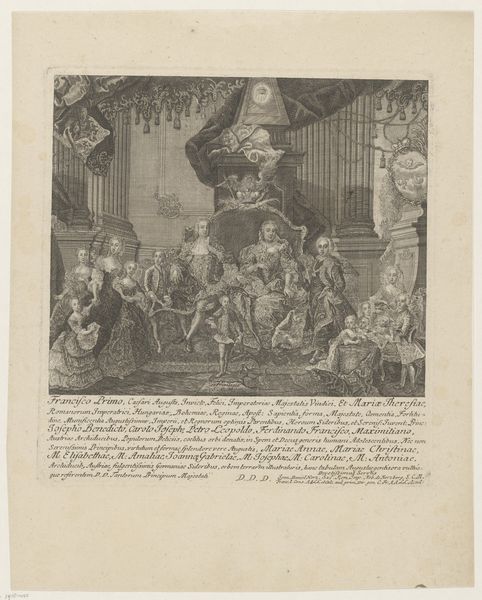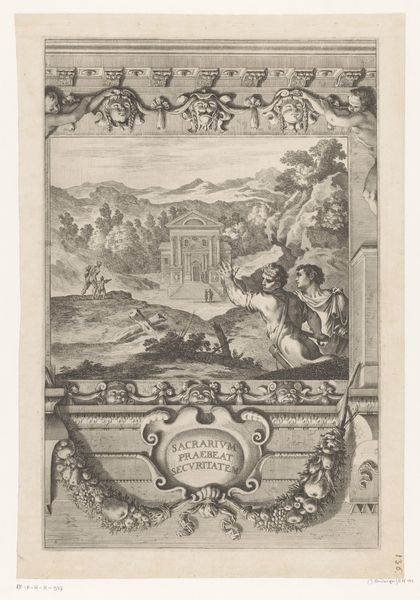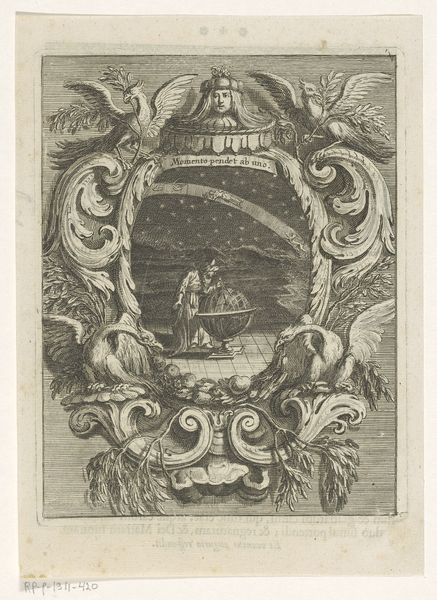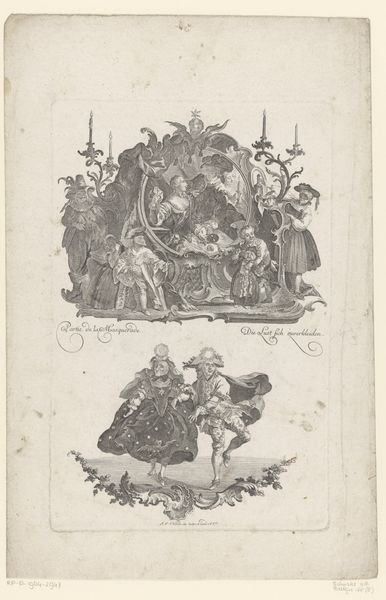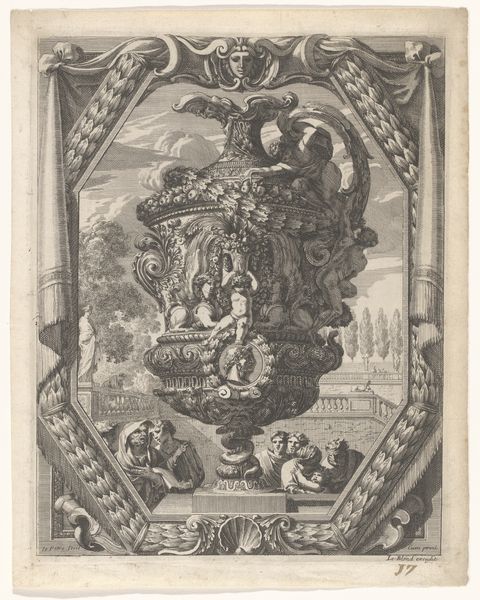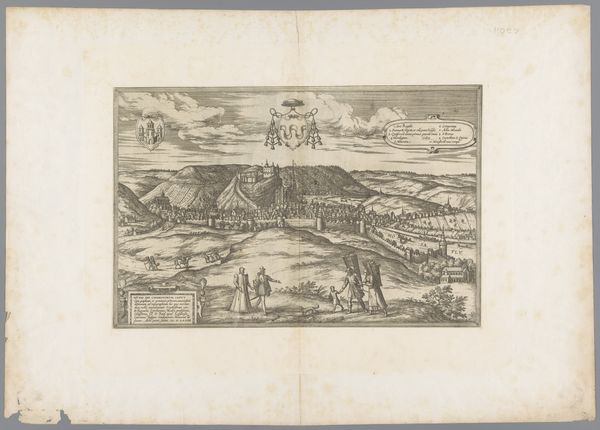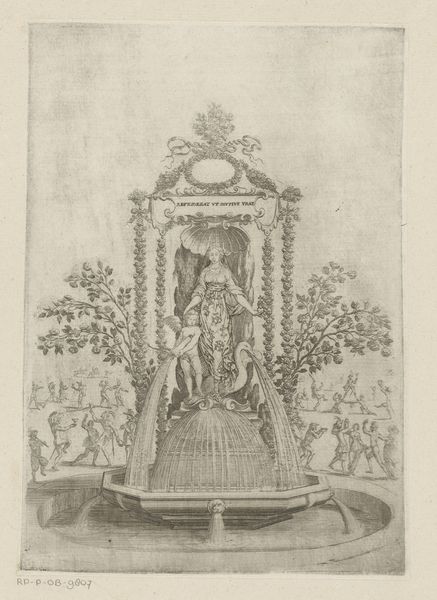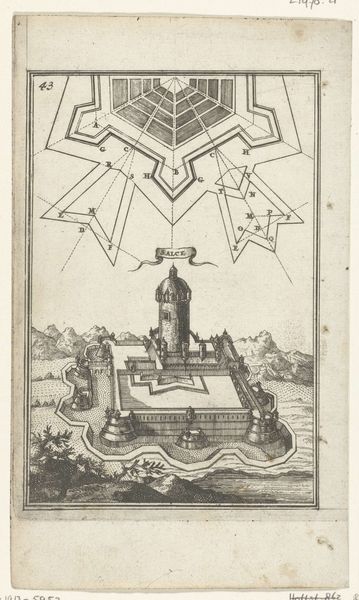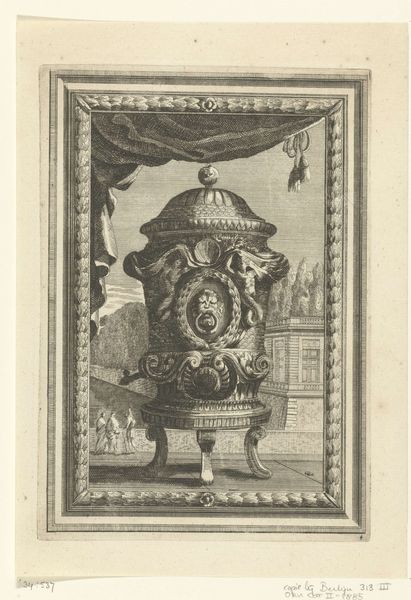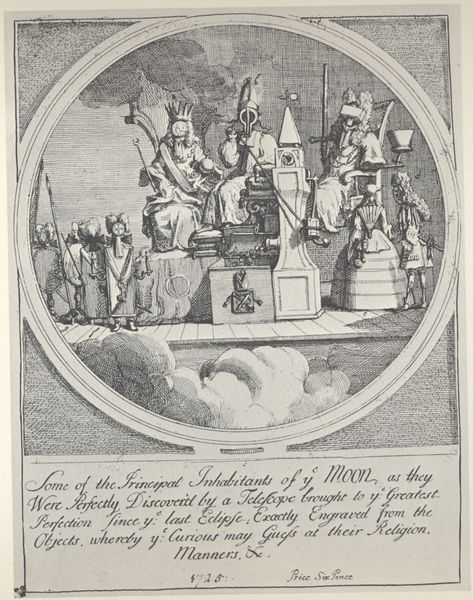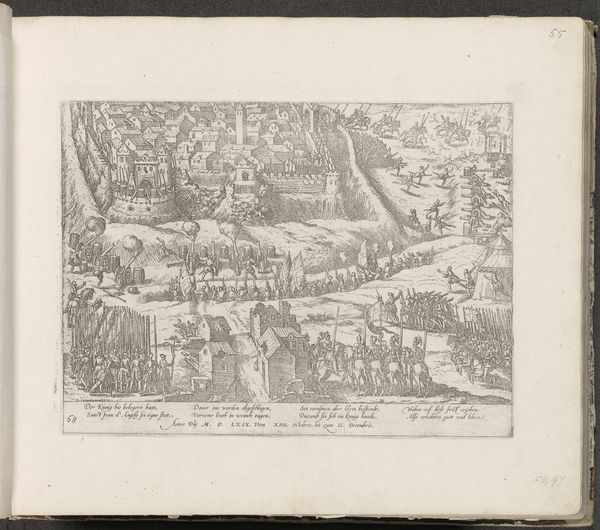
Beeld van Maria met kind onder een boom, zwevend boven het klooster van Marienbaum 17th century
0:00
0:00
engraving
#
baroque
#
old engraving style
#
landscape
#
figuration
#
line
#
history-painting
#
engraving
Dimensions: height 282 mm, width 175 mm
Copyright: Rijks Museum: Open Domain
Editor: This engraving, dating from the 17th century, depicts the Virgin Mary with child under a tree, hovering over Marienbaum Abbey. The contrast between the intricate detail of Mary's robe and the landscape below is striking. How would you interpret this work? Curator: This piece, made using the repeatable and relatively affordable technology of engraving, reveals a fascinating intersection of religious devotion and material culture. The Virgin, presented almost as a monument floating above the monastery, suggests a connection between the divine and the earthly through the labor-intensive process of its making and dissemination. Editor: So you’re saying that the engraving technique itself contributes to the meaning? Curator: Precisely. Consider the social context: the print would have been circulated, reproduced, and consumed, making the sacred accessible and tangible. Note also the labour involved in its creation, a collaboration between artist and publisher to deliver the imagery to a consumer audience. This intertwining of religion and emerging market economies challenges traditional notions of art as purely spiritual or aesthetic, and begs the question of what this Virgin imagery actually signified. Editor: That makes me think about who would have been buying and circulating these images, and what role they played in everyday life. Curator: Exactly. By focusing on the materiality and distribution, we can uncover layers of meaning embedded in this seemingly straightforward religious image. Does that shift your understanding of the image? Editor: Absolutely. Thinking about the engraving as a product intended for circulation opens up a new way of seeing its purpose and significance. Curator: Indeed. Examining the material means of production and consumption offers a fresh perspective beyond simply the religious subject matter, providing deeper insight into 17th-century society.
Comments
No comments
Be the first to comment and join the conversation on the ultimate creative platform.
